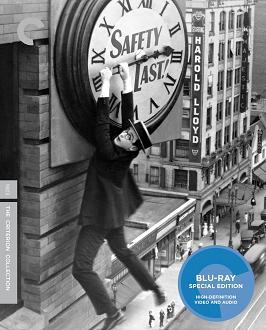Harold Lloyd clinging desperately to the hand of a building clock suspended precariously high over the city streets: it’s one of the most iconic images from the silent screen era, and the movie that contains it is one of the fleetest comedies either Lloyd or any of his contemporaries ever made. Safety Last! is one of Lloyd’s thrill comedies; not all of his films were in that genre, but this one is his greatest and is really something to see.

Studio: Criterion
Distributed By: N/A
Video Resolution and Encode: 1080I/AVC
Aspect Ratio: 1.33:1
Audio: English PCM 1.0 (Mono), English PCM 2.0
Subtitles: None
Rating: Not Rated
Run Time: 1 Hr. 13 Min.
Package Includes: Blu-ray
keep caseDisc Type: BD50 (dual layer)
Region: A
Release Date: 06/18/2013
MSRP: $39.95
The Production Rating: 5/5
Video Rating: 4/5 3D Rating: NA
Audio Rating: 5/5
Special Features Rating: 5/5
Overall Rating: 4.5/5
Reviewed By: Matt Hough
Support HTF when you buy this title:






